Did you know that sponge gourd, also known as luffa, is not just a vegetable but also a natural sponge and dish scrubber? This versatile veggie can be consumed as an edible sponge, used as a kitchen sponge or natural scrubber, and even transformed into a plant-based bath sponge. With its eco-friendly properties and various uses, sponge gourd is a must-have in every home.
Key Takeaways
- Sponge gourd, also known as luffa, can be used as an edible sponge, kitchen sponge, and plant-based bath sponge.
- It is a versatile vegetable that adds a unique texture and flavor to dishes when cooked.
- By growing sponge gourd in your own garden, you can have a sustainable and eco-friendly cleaning tool at your disposal.
- Sponge gourd has a long history and has been cultivated for over 2,000 years in the Mediterranean region.
- Embracing sponge gourd allows you to contribute to sustainable living and reduce your environmental impact.
The History and Origin of Sponge Gourd
https://www.youtube.com/watch?v=ybtDgbOn0lw
Sponge gourd, scientifically known as Luffa aegyptiaca, has a rich history that dates back over 2,000 years and is deeply rooted in the Mediterranean region. According to William Woys Weaver’s book, 100 Vegetables and Where They Came From, the sponge gourd has played a significant role in various cuisines throughout history.
In archaeological sites in Cyprus and Egypt, ceramic copies of the sponge gourd have been discovered, providing evidence of its ancient origins and importance. These findings reflect the strong culinary traditions associated with the sponge gourd in the Mediterranean region.
It is fascinating to explore the historical significance of this versatile vegetable and its integration into diverse cuisines. The sponge gourd’s long-standing presence in the Mediterranean region has undoubtedly contributed to its widespread recognition and popularity today.
Ancient Origins
| Region | Archaeological Findings |
|---|---|
| Cyprus | Unearthed ceramic copies of the sponge gourd |
| Egypt | Discovery of sponge gourd artifacts in archaeological sites |
Culinary Significance
“The sponge gourd has long been cherished for its culinary versatility in Mediterranean cuisines, with its unique flavor and texture enhancing a multitude of dishes.”
Culinary Uses of Sponge Gourd
As a passionate cook, I love exploring unique ingredients that can add a special touch to my dishes. That’s why I was thrilled to discover the culinary potential of sponge gourd, also known as luffa. This versatile vegetable, belonging to the Cucurbita pepo family, can be used in a variety of cooking styles, offering a delightful twist to traditional recipes.
When sponge gourd is harvested at the ideal size, it can be cooked in dishes just like its cousin, zucchini. The tender flesh of sponge gourd lends itself well to sautéing and stir-frying, releasing a subtle flavor that pairs beautifully with other ingredients. Whether you’re adding it to a stir-fry, stuffing it with aromatic fillings, or incorporating it into soups and stews, sponge gourd brings a unique texture and taste to every dish.
Now, let me share one of my favorite sponge gourd recipes: Sautéed Sponge Gourd with Garlic and Herbs. This simple yet flavorful dish showcases the natural sweetness and tenderness of the gourd, enhanced by the aromatic combination of garlic and fresh herbs.
“Sponge gourd’s delicate flavor pairs perfectly with garlic and herbs, creating a delightful sautéed dish that is both vibrant and delicious.”
Recipe: Sautéed Sponge Gourd with Garlic and Herbs
- Ingredients:
- 1 medium-sized sponge gourd
- 2 cloves of garlic, minced
- 1 tablespoon olive oil
- 1 teaspoon fresh thyme, chopped
- 1 teaspoon fresh parsley, chopped
- Salt and pepper to taste
- 1. Peel the sponge gourd and remove its seeds. Cut it into thin slices or julienne strips.
- 2. Heat the olive oil in a pan over medium heat. Add the minced garlic and sauté until fragrant.
- 3. Add the sliced sponge gourd to the pan and sauté for 5-7 minutes until it becomes tender and slightly golden.
- 4. Sprinkle the fresh thyme and parsley over the sautéed sponge gourd. Season with salt and pepper to taste.
- 5. Cook for an additional 2-3 minutes, allowing the flavors to meld together.
- 6. Remove from heat and serve the sautéed sponge gourd as a side dish or as part of a main course.
The sautéed sponge gourd with garlic and herbs is a delightful addition to any meal, whether you’re enjoying it alongside grilled meats, incorporating it into a vegetarian stir-fry, or even enjoying it as a light and flavorful lunch option.
With its tender texture and delicate flavor, sponge gourd is a versatile vegetable that can elevate your culinary creations. Experiment with different recipes and cooking techniques to discover the myriad of possibilities that this remarkable ingredient offers.
Growing Sponge Gourd in Your Garden
Growing sponge gourd, also known as luffa, in your garden is a rewarding experience that allows you to enjoy this versatile vegetable right at home. To ensure successful growth, there are a few key factors to consider.
Providing Support for Vine Growth
Sponge gourd plants are vigorous climbers, and their vines require a sturdy trellis or support structure to climb and hang down. This allows the fruits to grow straight and facilitates easy slicing for cooking. When choosing a trellis, make sure it can withstand the weight of the developing gourds.
Optimizing Soil Conditions
The success of growing sponge gourd relies heavily on the quality of the soil. The gourds thrive in well-draining soil with a pH level between 6.0 and 7.5. Before planting, prepare the soil by incorporating organic matter such as compost or aged manure to improve its fertility.
Watering and Fertilization
Sponge gourd plants have a high water demand and require consistent moisture throughout the growing season. Adequate watering is essential, especially during dry spells, to prevent the plants from becoming stressed. Additionally, regular fertilization with a balanced organic fertilizer will promote healthy growth and maximize productivity.
Managing Pests and Diseases
Sponge gourd plants can be susceptible to certain pests and diseases, such as aphids, cucumber beetles, and powdery mildew. Monitor your plants regularly and take necessary measures to control any pests or diseases that may appear. Implementing organic pest control methods can help protect your sponge gourd crop without harmful chemicals.
Harvesting Sponge Gourd
Sponge gourds are ready to harvest when they reach their desired size for consumption or sponge production. For culinary purposes, harvest the gourds when they are 14 to 20 inches long. If you intend to use them for sponges, allow the gourds to fully mature on the vine until the skin becomes dry and loose. At this stage, you can easily peel off the skin and extract the fibrous skeleton inside.
| Key Considerations for Growing Sponge Gourd | |
|---|---|
| Suitable trellis or support structure | Ensure vines have proper support for climbing and hanging |
| Well-draining soil | Prepare soil with organic matter for optimal fertility |
| Adequate watering | Keep soil consistently moist, especially during dry spells |
| Regular fertilization | Apply balanced organic fertilizer to promote healthy growth |
| Pest and disease management | Monitor and control pests and diseases using organic methods |
| Proper harvesting | Harvest at the desired size for consumption or sponge production |
By providing the necessary support, optimizing soil conditions, and implementing proper care techniques, you can successfully grow your own sponge gourd in your garden. Whether you’re looking to enjoy its culinary uses or utilize it as a natural sponge, sponge gourd is a versatile and rewarding plant to cultivate.
The Versatility of Sponge Gourd as a Cleaning Tool
Did you know that sponge gourd, also known as luffa, can be transformed into a natural sponge? After the flesh falls away, the remaining fibrous skeleton of the sponge gourd can be hollowed out, creating a plant-based bath sponge that is both sustainable and eco-friendly.
Unlike synthetic sponges and cleaning tools commonly found in households, sponge gourd provides a natural and renewable alternative. By embracing sponge gourd as a cleaning tool, you can contribute to sustainable living and reduce your environmental impact.
Switching to a sponge gourd bath sponge not only benefits the planet but also your personal well-being. The natural fibers of the sponge gently exfoliate your skin, leaving it feeling refreshed and rejuvenated.
The Benefits of Using a Sponge Gourd Bath Sponge:
- Natural exfoliation for smooth and glowing skin
- Environmentally friendly and biodegradable
- Does not release harmful chemicals or microplastics
- Durable and long-lasting
Make the switch to a sponge gourd bath sponge today and experience the difference. Your skin will thank you, and the planet will too.
| Comparison of Sponge Gourd Bath Sponge versus Synthetic Sponge | ||
|---|---|---|
| Feature | Sponge Gourd Bath Sponge | Synthetic Sponge |
| Material | Natural plant-based fibers | Synthetic materials (usually plastic) |
| Environmental Impact | Biodegradable and sustainable | Non-biodegradable and contributes to plastic pollution |
| Exfoliation | Gently exfoliates and removes dead skin cells | May be too abrasive for sensitive skin |
| Durability | Durable and long-lasting | May tear or deteriorate quickly |
Tips for Growing Luffa Gourd in Containers
If you have limited space in your garden, don’t worry! You can still enjoy the benefits of growing luffa gourds by planting them in containers. This allows you to maximize your available space while reaping a bountiful harvest of these versatile vegetables. To ensure successful growth, follow these helpful tips:
1. Choose the right containers
Select containers that are at least 18 inches deep and have a capacity of 5 gallons or more. This will provide enough space for the luffa gourd’s root system to develop and thrive. Additionally, opt for containers made of breathable materials, such as clay or fabric pots, to promote proper drainage.
2. Provide a sturdy trellis or support structure
Just like their garden-grown counterparts, luffa gourds in containers need a reliable trellis or support structure to climb and hang down. Install a strong trellis or attach a wire frame to the container to provide ample support for the gourd vines. This will help prevent them from becoming entangled and promote better airflow, reducing the risk of disease.
3. Ensure proper sunlight and water
Place your containers in a location that receives full sunlight for at least six to eight hours a day. Luffa gourds require plenty of sunlight to grow and produce an abundant harvest. Additionally, monitor the moisture level of the soil in your containers and water them regularly, keeping the soil consistently moist but not waterlogged.
4. Pay attention to frost
It’s crucial to be mindful of frost when growing luffa gourds in containers. As the gourds approach maturity, keep an eye on the weather forecast and harvest them before the first frost. Exposure to frost can damage the gourd vines and reduce crop productivity.
5. Maintain plant health and productivity
To maximize the health and productivity of your luffa gourd plants, provide adequate nutrition through regular fertilization. Use a balanced organic fertilizer or compost to nourish the plants throughout the growing season. Additionally, monitor for pests and diseases, and take appropriate measures to protect the plants and maintain their vigor.
By following these tips and providing the necessary care and support, you can successfully grow luffa gourds in containers. Not only will you save space in your garden, but you’ll also enjoy the satisfaction of harvesting your own fresh and healthy luffa gourds, ready to be used in the kitchen or transformed into natural sponges.
The Process of Harvesting and Using Luffa Sponges
When it comes to utilizing luffa gourds as sponges, the process begins with proper harvesting. It’s essential to allow the gourds to fully ripen on the vine until the skin becomes loose and dry. Patience is key, as harvesting too early could result in immature and less effective sponges.
Once the luffa gourds are ripe, it’s time to peel off their skins. This can be easily done by gently pulling the skin away from the dried fruit inside. As you peel, you’ll reveal a network of fibrous material that serves as the sponge’s core. These fibrous squash interiors are the sponge material that will be used for a variety of purposes.
To prepare the luffa sponges for use, it’s important to dry them thoroughly. This can be achieved by placing the peeled luffas in a well-ventilated area with low humidity. The drying process may take a few weeks, but it is crucial to ensure that the sponges are completely dry to prevent mold or bacteria growth.
Once the luffa sponges are fully dried, they will become hard and rigid. To make them suitable for use, they need to undergo a softening process. This can be done by soaking the dried sponges in water for a few minutes or until they become pliable. This rehydration step will restore the sponge material to its natural form, making it ready for a range of household cleaning tasks.
The harvested luffa sponges offer a sustainable and eco-friendly option for household cleaning. With their natural texture, they provide gentle yet effective scrubbing power that can be used on various surfaces. From dishes and countertops to bathroom tiles and shower stalls, luffa sponges are versatile tools for maintaining cleanliness throughout your home.
The Benefits of Using Luffa Sponges:
- Environmentally friendly alternative to synthetic cleaning sponges
- Natural scrubbing power that is gentle on surfaces
- Reusable and long-lasting, reducing waste
- Biodegradable and compostable, minimizing environmental impact
By incorporating luffa sponges into your cleaning routine, you not only embrace a natural and sustainable option but also contribute to a greener and healthier living environment.
| Benefits of Luffa Sponges | Usages |
|---|---|
| Environmentally friendly | Household cleaning |
| Natural scrubbing power | Kitchen utensil cleaning |
| Reusable and long-lasting | Bathroom cleaning |
| Biodegradable and compostable | Shower scrubbing |
Growing Angled Luffa Gourd at Home
Angled luffa gourd, also known as angled loofah, is a wonderful plant to grow at home for both natural sponges and delicious vegetables. With the right knowledge and care, you can successfully grow your own angled luffa gourds at home.
Starting Your Angled Luffa Gourd Journey
To start growing angled luffa gourds, you’ll need high-quality seeds or seedlings. Look for reputable suppliers that offer organic and non-GMO varieties.
Prepare a sunny spot in your garden or choose a large container if you have limited space. Angled luffa gourds thrive in warm climates, so make sure the soil is well-drained and rich in organic matter.
Avoiding Transplant Shock
If you’re transplanting seedlings into your garden, it’s important to handle them carefully to avoid transplant shock.
Before transplanting, water the seedlings thoroughly, and dig a hole large enough to accommodate the root system. Gently remove the seedling from its container, taking care not to damage the roots, and place it in the hole.
Backfill the hole with soil, firm it gently around the seedling, and water it again. Keep the soil consistently moist to help the seedling establish itself.
Tips for Cool Weather Growers
If you live in a cool climate, you can still grow angled luffa gourds with some extra care. Start the seeds indoors several weeks before the last frost date, and provide a warm and well-lit environment for germination.
Once the seedlings are strong enough, you can transplant them into the garden when the weather warms up. Consider using cloches or row covers to protect the young plants from cold temperatures and extend the growing season.
Caring for Your Angled Luffa Gourds
Angled luffa gourds are vigorous climbers, so provide a sturdy trellis or support structure for them to grow vertically. This will help them utilize space efficiently and produce straight gourds that are perfect for slicing.
Water your angled luffa gourds regularly, keeping the soil consistently moist but not waterlogged. Applying a layer of organic mulch around the base of the plants will help conserve moisture and suppress weeds.
As the plants grow, you can fertilize them with a balanced organic fertilizer every few weeks to promote healthy growth and fruit development.
| Key Tips for Growing Angled Luffa Gourd |
|---|
| Start with high-quality seeds or seedlings |
| Choose a sunny spot with well-drained soil |
| Handle seedlings carefully to avoid transplant shock |
| Protect young plants from cold weather in cool climates |
| Provide a sturdy trellis or support structure for vertical growth |
| Water regularly to keep the soil moist |
| Fertilize with balanced organic fertilizer every few weeks |
By following these tips and providing the right conditions, you’ll be rewarded with a bountiful harvest of angled luffa gourds that can be enjoyed as both natural sponges and a delicious vegetable in your home.
Benefits and Uses of Luffa Sponges
Luffa sponges offer a range of benefits and uses. These natural sponges are not only great for cleaning and exfoliating the skin, but they can also be utilized in various beauty products, such as luffa soaps and skin cleansers. With their gentle yet effective exfoliating properties, luffa sponges help remove dead skin cells, leaving the skin feeling fresh and rejuvenated. They are particularly beneficial for those with dry or rough skin, as they promote smoothness and improve overall skin texture.
When it comes to household cleaning, luffa sponges are a fantastic alternative to synthetic sponges. Their natural fibers can effectively scrub away dirt, grime, and stains without causing damage to surfaces. Whether you’re washing dishes, countertops, or bathroom tiles, luffa sponges provide a gentle yet effective solution for achieving a clean and sparkling home. Plus, they are eco-friendly and biodegradable, making them a sustainable choice for those conscious of their environmental impact.
Not limited to just skincare and cleaning, luffa sponges can also be incorporated into craft projects. Their unique texture and structural properties make them ideal for creating small molds or natural baskets. With a little creativity and imagination, you can turn luffa sponges into beautiful and practical items for home decor or gift-giving.
So, whether you’re looking for a natural sponge for your beauty routine, a sustainable cleaning tool, or a versatile material for crafting, luffa sponges provide an array of uses. Embrace the benefits of these eco-friendly sponges and discover a world of possibilities for enhancing your skincare routine, household cleaning, and creative projects.
Growing Tips and Techniques for Luffas
As someone who has successfully grown luffas in my garden, I have discovered several tips and techniques that can help you achieve a bountiful harvest of these versatile vegetables. By following these guidelines, you can avoid common pitfalls and ensure the optimal growth and development of your luffas.
Starting Seeds at the Right Time
When it comes to growing luffas, timing is crucial. Start your luffa seeds indoors about 4-6 weeks before the last frost date in your area. This will give the seedlings enough time to establish themselves before being transplanted outside.
Avoiding Transplant Shock
Transplanting luffa seedlings can be a delicate process, and it’s essential to minimize transplant shock. Harden off your seedlings by gradually exposing them to outdoor conditions over a period of 7-10 days before planting them in the garden. This will help them acclimate to the change in environment and reduce stress.
Adjustments for Different Weather Conditions
Luffas thrive in warm and sunny weather, but they can be sensitive to extreme heat or cold. Provide your luffa plants with a sheltered spot if your area experiences scorching temperatures. On the other hand, if you live in a cooler climate, consider using row covers or creating a microclimate to keep your luffas warm and protected.
Harvesting at the Right Stage
When it comes to harvesting luffas, timing is key. The ideal stage to harvest luffas is when they turn yellow or brown and feel dry and lightweight. At this stage, the skin can be easily peeled off, revealing the fibrous interior that can be used for sponges or culinary purposes. Harvesting luffas at this stage ensures optimal flavor and texture.
Remember, growing luffas can be a rewarding experience, but it requires patience and attention to detail. By implementing these tips and techniques, you can increase your chances of a successful luffa harvest in your garden.
My Luffa Harvesting Timeline
| Stage of Luffa | Description |
|---|---|
| 1. Seed Germination | Seeds germinate and seedlings emerge. |
| 2. Transplanting | Seedlings are transplanted into the garden. |
| 3. Vine Growth | Vines grow and start climbing the trellis. |
| 4. Flowering | Yellow flowers start appearing on the vines. |
| 5. Fruit Development | Fruits begin to form and grow in size. |
| 6. Ripening | Fruits turn yellow or brown and feel dry. |
| 7. Harvesting | Luffas are harvested at the right stage of maturity. |
Personal Reflection: My Journey with Sponge Gourd
As a home gardener, my personal experience with growing and utilizing sponge gourd has been truly fulfilling. It has allowed me to embrace sustainability and eco-friendly living in a practical and meaningful way. Incorporating this versatile vegetable into various aspects of my life, from cooking to cleaning, has added a touch of uniqueness to my home and contributed to my commitment to environmental responsibility.
Home gardening has always been a passion of mine, and discovering the wonders of sponge gourd has opened up a whole new world of possibilities. Not only does it offer delicious and nutritious culinary options, but it also serves as a natural and eco-friendly cleaning tool.
The process of growing sponge gourd in my own backyard has been both exciting and rewarding. Witnessing the vines flourish and the fruits mature has brought me a profound sense of satisfaction. I have learned valuable lessons in patience, nurturing, and the importance of sustainable practices.
By cultivating sponge gourd, I have been able to reduce my carbon footprint and minimize waste. I no longer rely on synthetic cleaning products or single-use sponges that harm the environment. Instead, I have the privilege of using a plant-based, biodegradable sponge that not only cleans effectively but also aligns with my values of sustainability and eco-conscious living.
My sponge gourd journey has also sparked my creativity in the kitchen. Experimenting with different recipes and incorporating this unique vegetable into my meals has been a delightful experience. From stir-fries to soups, sponge gourd has added a distinct texture and flavor to my dishes, impressing both family and friends.
Furthermore, the journey with sponge gourd has strengthened my bond with nature and deepened my appreciation for the wonders of home gardening. Watching the plants thrive and witnessing the cycle of growth and harvest has instilled in me a profound sense of connection to the earth.
My Top Tips for Sponge Gourd Home Gardening:
- Choose a sunny location with well-drained soil for planting.
- Provide a sturdy trellis or support structure for the vine to climb and hang down.
- Water regularly, ensuring the soil remains evenly moist.
- Apply organic fertilizer to promote healthy growth.
- Harvest sponge gourds when they are 14 to 20 inches long for the best taste and texture.
“My journey with sponge gourd has been an enriching one, both personally and environmentally. It has shown me that by embracing sustainable practices and incorporating nature’s gifts into our daily lives, we can make a positive impact on our planet.” – Garden Enthusiast
| Benefits of Growing Sponge Gourd | Benefits of Using Sponge Gourd as a Cleaning Tool |
|---|---|
|
|
Conclusion
In conclusion, sponge gourd, also known as luffa, is a remarkable vegetable that offers versatility, culinary delights, and sustainable living solutions. Its unique properties make it a valuable addition to any home.
When it comes to culinary uses, sponge gourd can be enjoyed in various dishes, bringing a distinctive flavor and texture. From sautéing to stir-frying, this vegetable adds a touch of creativity to your meals, expanding your culinary horizons.
But sponge gourd’s capabilities go beyond the kitchen. It doubles as a natural sponge and eco-friendly cleaning tool. When the flesh is removed, the fibrous skeleton becomes an excellent sponge material, perfect for household cleaning and personal care routines. By using sponge gourd, you not only reduce reliance on synthetic cleaning tools but also contribute to a sustainable lifestyle.
Embracing sponge gourd means embracing sustainable living. Its versatility allows you to explore its culinary potential, savor its flavors, and enjoy the benefits of a natural sponge. By incorporating sponge gourd into your daily life, you join a growing movement towards sustainable and eco-friendly practices.

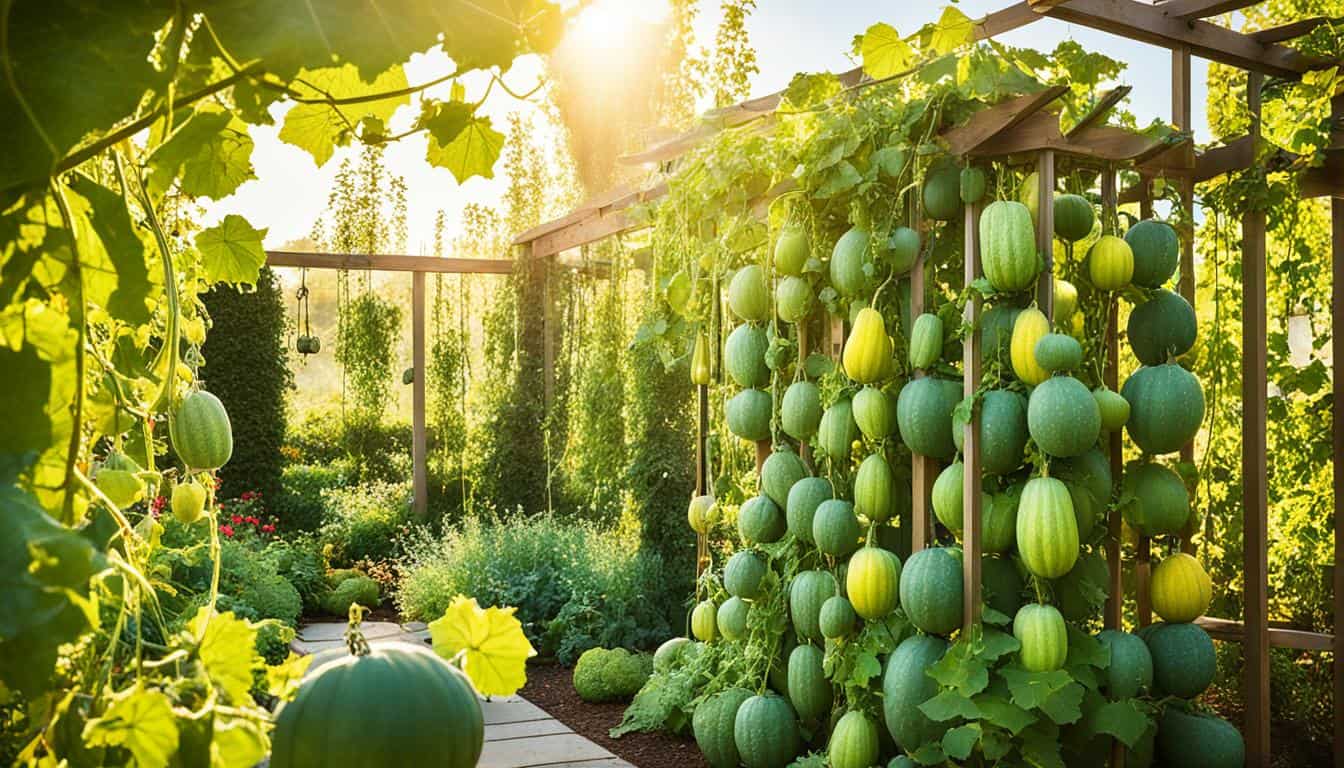
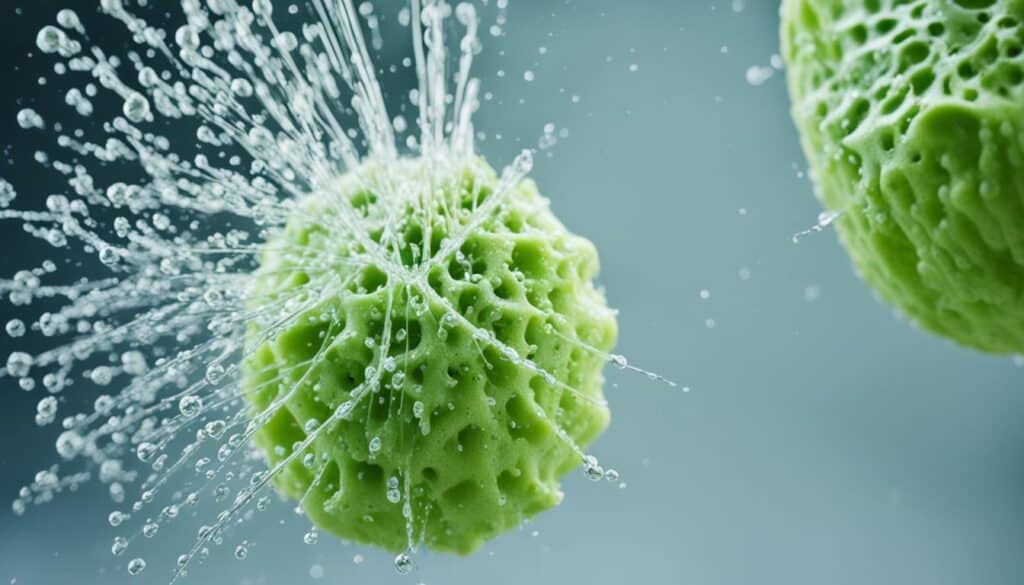
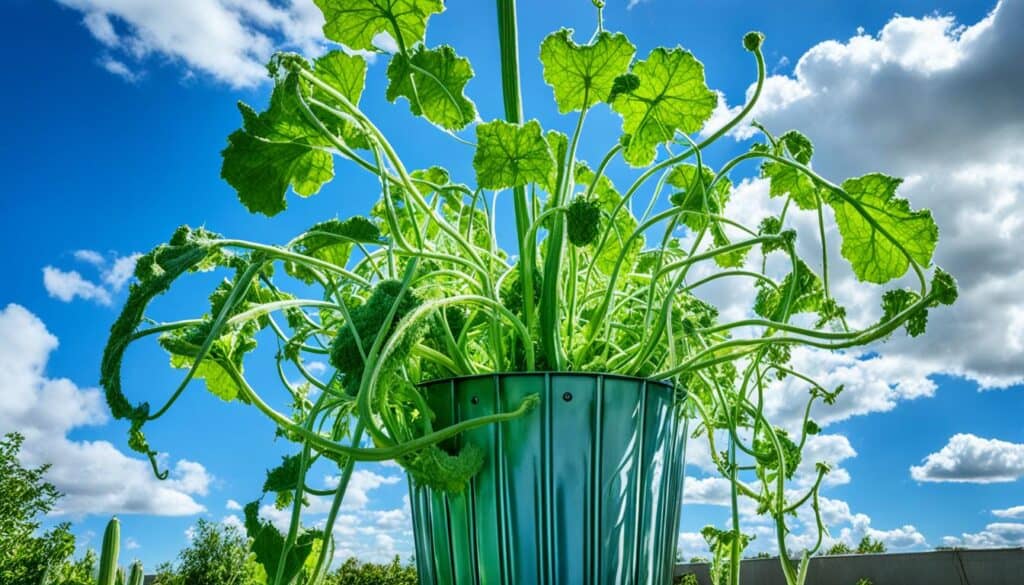

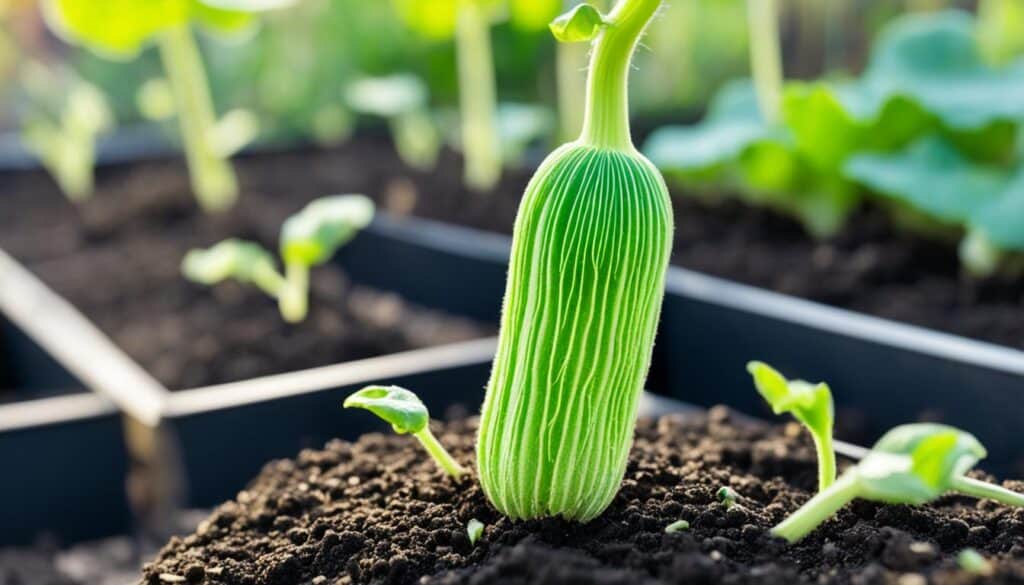
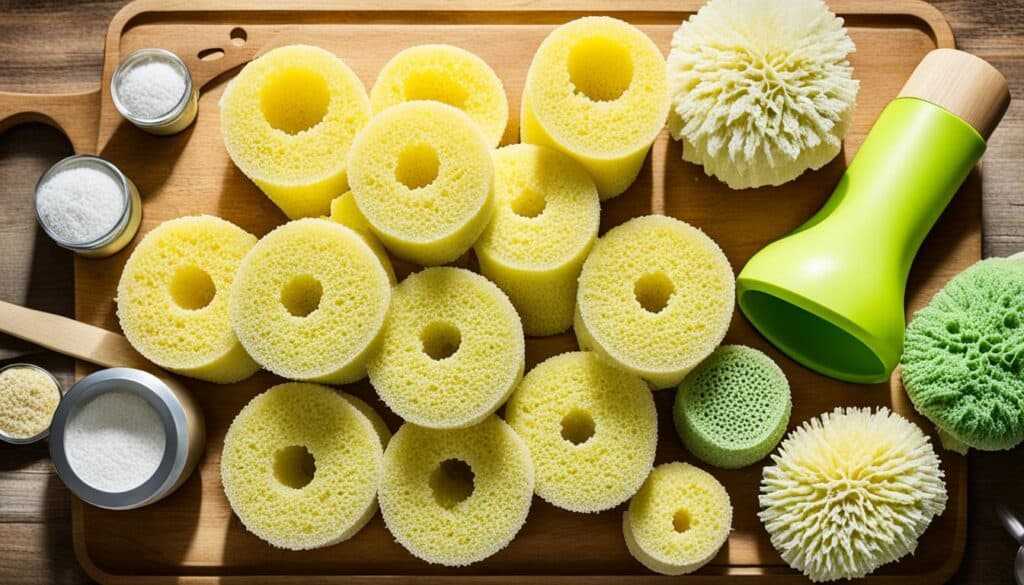



Leave a Reply